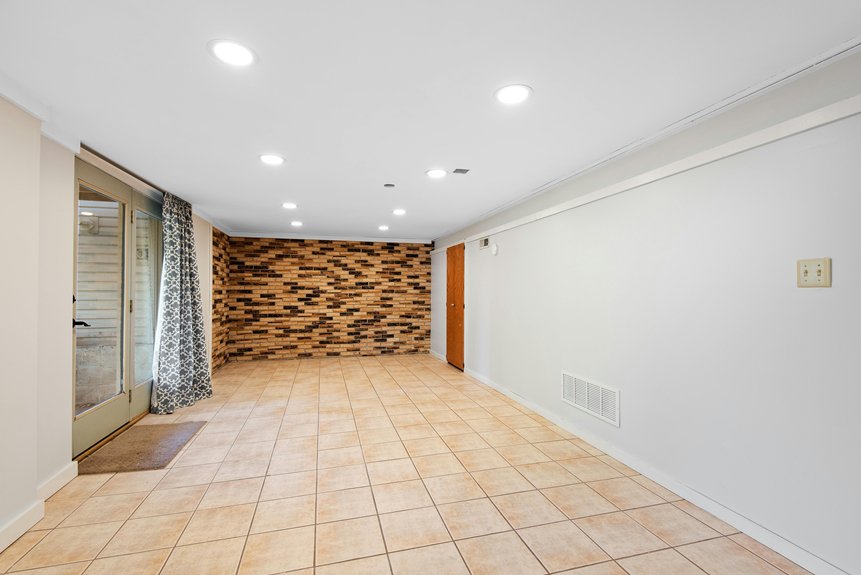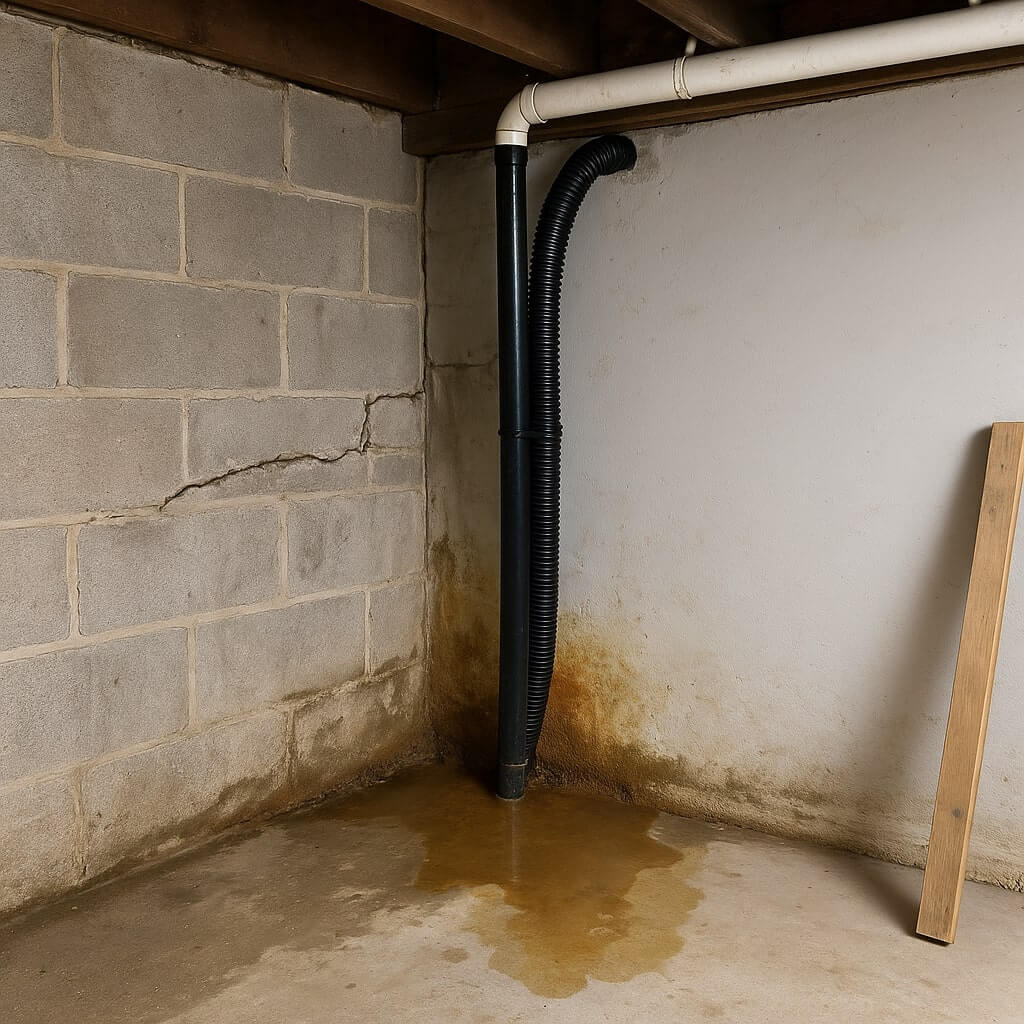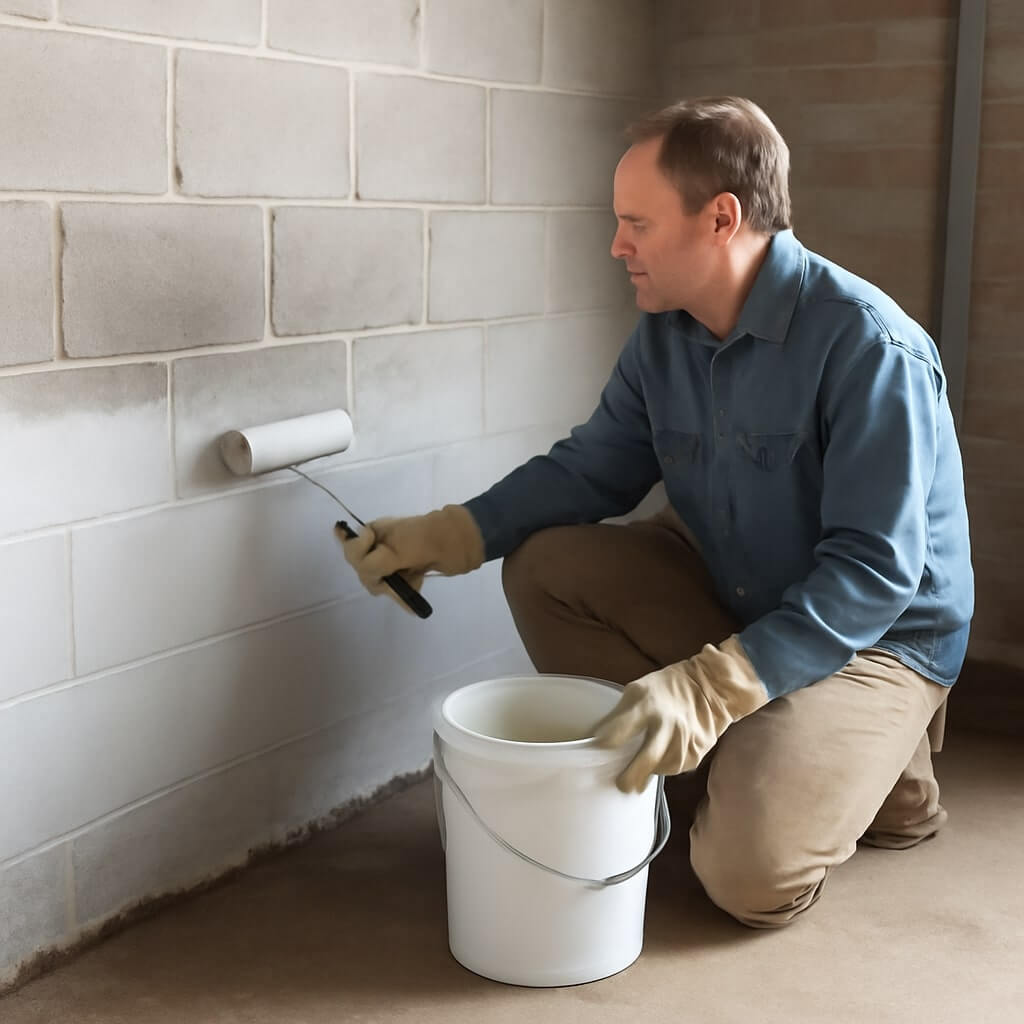Indoor basement waterproofing is essential for preventing moisture damage and maintaining a healthy environment in your home. You might notice signs of dampness, like mold or water stains, but don’t worry—there are practical steps you can take to protect your space. From evaluating your basement to selecting the right materials, the process can seem intimidating. However, understanding the causes and solutions will empower you to tackle this project effectively. Let’s explore how to get started.
Key Takeaways
- Assess your basement for signs of water intrusion, such as stains, mold, or cracks in walls and floors.
- Clean the basement thoroughly to remove debris and any existing mold before applying waterproofing materials.
- Use waterproofing membranes and concrete sealers to create effective moisture barriers against water infiltration.
- Seal any visible cracks with hydraulic cement and consider adding a sump pump for areas prone to water pooling.
- Regularly inspect and maintain gutters and downspouts to ensure proper drainage away from the foundation.
Understanding the Causes of Basement Dampness
When you notice dampness in your basement, understanding the root causes can be the first step toward effective waterproofing.
High humidity levels often contribute to moisture buildup, so focusing on humidity control is essential. Poor drainage solutions can also lead to water pooling around your foundation, exacerbating dampness.
Check for clogged gutters or downspouts that might direct water towards your home. Additionally, cracks in your walls or floor can allow moisture to seep in.
Assessing Your Basement for Water Intrusion
To effectively assess your basement for water intrusion, start by looking for signs of water damage, like stains or mold.
Next, inspect your foundation for cracks, as these can be entry points for moisture.
Identifying these issues early can save you from more extensive repairs down the line.
Signs of Water Damage
Water damage in your basement can quietly wreak havoc, often going unnoticed until it’s too late.
To protect your home, look for these signs of water damage:
- Water stains on walls or ceilings, indicating moisture presence.
- Peeling paint or wallpaper, suggesting humidity issues.
- Musty odors, which can signal mold growth or stagnant water.
- Dampness or puddles on the floor, showing recent leaks or condensation.
Regularly checking for these indicators can save you from costly repairs and maintain a healthy basement environment.
Don’t ignore these warning signs—act quickly to safeguard your home!
Inspecting Foundation Cracks
After identifying signs of water damage, it’s time to take a closer look at your foundation.
First, examine the crack types: vertical, horizontal, and stair-step cracks each indicate different issues. Vertical cracks often result from settling, while horizontal ones can signal serious structural problems.
Use a moisture meter to assess if water is seeping through. For repair methods, consider epoxy injections for small cracks, or hydraulic cement for larger ones.
If cracks are extensive, you may need professional help. Addressing these issues promptly can prevent further water intrusion and protect your basement from costly damage.
Selecting the Right Waterproofing Materials
Choosing the right waterproofing materials is essential for ensuring your basement stays dry and protected from moisture damage.
Here are four key options to evaluate:
- Waterproofing Membranes: These are effective in creating a barrier against water infiltration.
- Moisture Barriers: Often made of polyethylene, they prevent moisture from seeping into your walls and floors.
- Sealants: Use high-quality sealants for small cracks and gaps to enhance protection.
- Drainage Mats: These help direct water away from your foundation while allowing moisture to escape.
Selecting the right combination will greatly improve your basement’s defense against moisture issues.
Step-by-Step Waterproofing Techniques
Once you’ve selected the right waterproofing materials, it’s time to put them to use with effective techniques.
Start by cleaning your basement walls and floors, removing any debris or mold.
Next, apply a concrete sealer to create a barrier against moisture.
For cracks, use hydraulic cement to seal them up.
If you’re tackling water pooling, consider installing a sump pump as a DIY solution.
Finally, guarantee proper drainage by adjusting any gutters or downspouts outside.
These waterproofing techniques will greatly enhance your basement’s resilience against water damage, keeping your space dry and usable for years to come.
Maintaining a Dry Basement Post-Installation
To keep your basement dry after installation, it’s essential to implement ongoing maintenance practices.
Implementing ongoing maintenance practices is crucial for keeping your basement dry after installation.
Start by regularly checking and maintaining your sump pump to guarantee it’s functioning correctly.
Here are four key steps:
- Inspect the sump pump monthly for clogs or debris.
- Test the pump by pouring water into the pit to see if it activates.
- Monitor humidity levels using a hygrometer; aim for 30-50% humidity.
- Seal any cracks or gaps in walls and floors to prevent water intrusion.
When to Call a Professional for Help
You should call a professional if you notice signs of severe damage, like extensive water stains or mold growth.
Complex repair issues can arise that require specialized tools and expertise, which might be beyond your DIY skills.
Knowing when to seek help can save you time, money, and ongoing headaches in the long run.
Signs of Severe Damage
Water damage in your basement can be a silent but destructive foe, often revealing itself only after significant harm has been done.
Here are some signs of severe damage that signal it’s time to call a professional:
- Mold Growth: If you see mold sprouting, it can threaten your health and the home’s structural integrity.
- Warped Walls: Bulging or warped walls indicate severe moisture damage.
- Musty Odors: Persistent musty smells often signal hidden moisture issues.
- Cracks in Foundation: Noticeable cracks can compromise your basement’s structural integrity.
Don’t wait—address these signs immediately!
Complex Repair Issues
Ignoring the signs of severe damage can lead to complex repair issues that require professional expertise.
If you notice extensive mold, structural cracks, or persistent water intrusion, it’s time to call in a pro. They use advanced complex repair techniques that go beyond standard DIY fixes, ensuring long-lasting solutions.
Tackling these problems yourself might result in costly repair solutions down the line, as improper handling can exacerbate the damage.
By engaging a professional, you’ll save time, money, and stress, ultimately protecting your home’s value.
Don’t hesitate to seek help when the situation becomes overwhelming—it’s a wise investment in your property.
Limited DIY Experience
When tackling basement waterproofing issues, knowing your limits is essential.
If you have limited tools and experience with beginner techniques, it might be time to call a professional.
Here are some signs that you should seek help:
- Extensive Water Damage: If you notice severe leaks or mold growth.
- Structural Concerns: Cracks in walls or floors that seem to widen.
- Lack of Tools: You don’t have the right equipment for the job.
- Uncertainty: If you’re unsure about the methods to use.
Don’t hesitate; getting professional help can save you time and money in the long run.
Conclusion
By taking proactive steps to waterproof your basement, you can create a healthier living environment and protect your home from potential damage. Regular assessments, proper sealing, and effective drainage solutions are key to long-term success. Don’t forget to maintain your waterproofing efforts to keep moisture at bay. If you encounter significant issues or feel overwhelmed, don’t hesitate to call a professional. A dry basement isn’t just a dream—it’s an achievable reality with the right approach!




